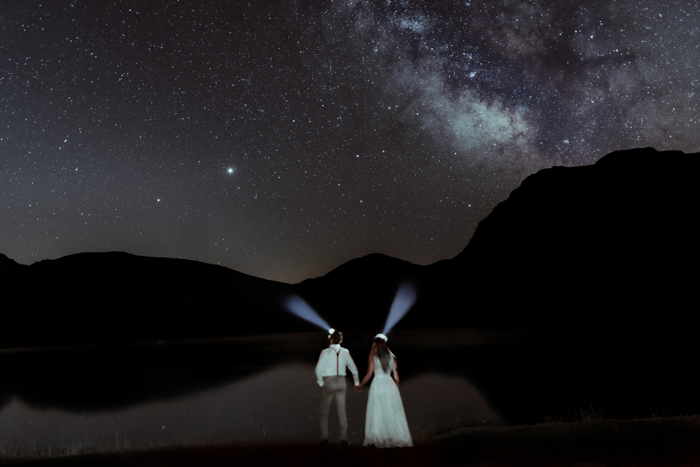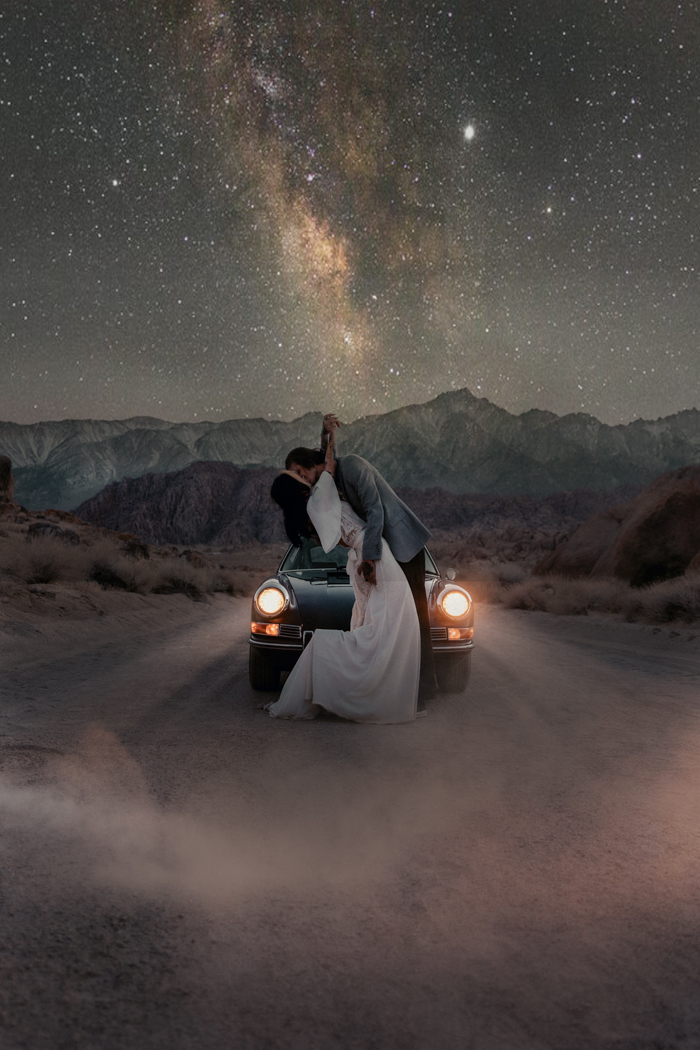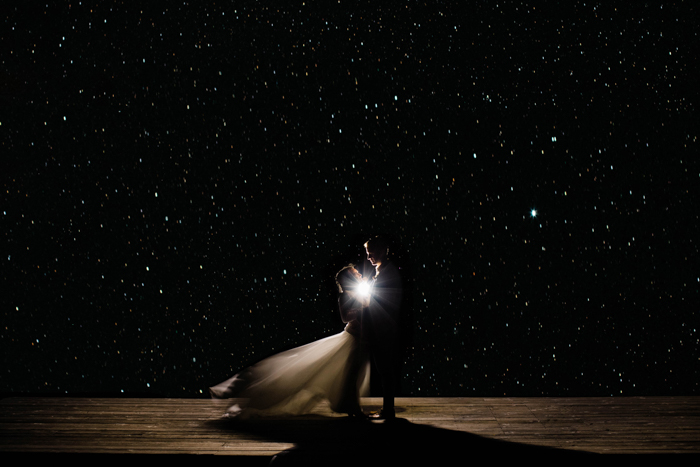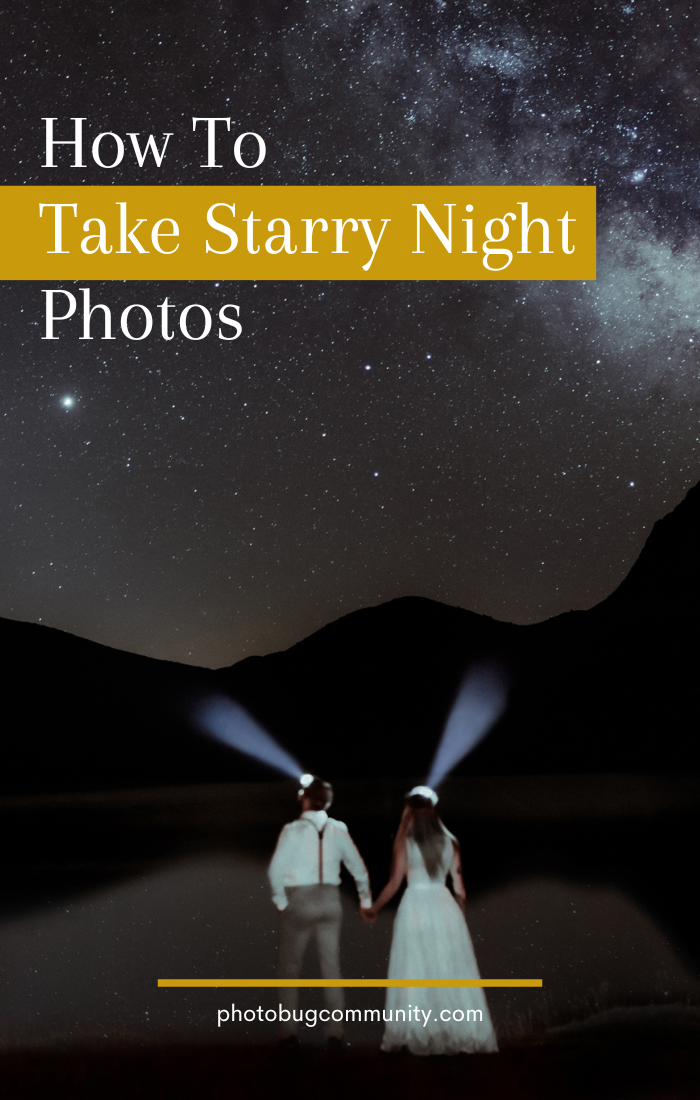
Image by Gaetane Glize
Your photo sessions don’t have to end when the sun goes down. In fact, some of the most incredible wedding and engagement images happen at nightfall. But we understand capturing the night sky with your couple for the first time can be a lot of pressure. That’s why we’re prepping you with all the tips and tricks for nailing a photo session when the moon is at its peak.
The Benefits Of Learning To Capture Starry Night Photos
From your gear to your online presence, there are a lot of factors that contribute to the success of your photography business. And one way to set yourself apart from other wedding photographers is by continuing to grow your skillset. By attending workshops or practicing new photography niches, you’ll be able to offer more to your clients.
Think a golden hour, mountain top elopement ending with a starry sky. Maybe a rooftop engagement session with the city skyline and stars as your backdrop. Adding this to your skillset will set you apart from other wedding photographers in the industry. Plus, it’ll make for some epic Instagram content.
Equipment Needed To Take Starry Night Photos
There’s very minimal equipment needed to take starry night photos. Here’s a list of what you’ll need to capture beautiful night sky images with your couples:
- You’ll need a camera with manual mode allowing you to have complete control over the camera setting
- A wireless shutter release timer remote to minimize any movement of the camera that could ruin your nighttime images
- You’ll also need a sturdy tripod to successfully capture long exposures
- A flashlight to make focusing a breeze
Prep Your Couples During Your Meeting
When meeting with your couples prior to their photo session, you’ll want to make sure you fully prepare them for what’s to come. This includes reviewing important topics like your location, time, and photo expectations.
If your couples have chosen a location that’s fit for starry night photos, talk them through the process. While a photographer can snap photos quickly during the day, that’s not the case for nighttime photography. And your couples might not be aware of this, so prep them accordingly.
Photobug tip: Can’t capture after-dark images because of weather? No problem. Many unavoidable factors can get in the way of your capturing those romantic starry night photos. That’s why it’s essential to create a backup plan with your couple ahead of time.

Image by Oak Img
Camera Settings for Capturing Star Photos
Your gear, location, and lighting will all play a large role in your camera settings. There are no one-size-fits-all camera settings that’ll work for every situation.
- Shoot in RAW to make your editing process easier
- Manual mode
- Use manual focus when shooting after dark. You can shine bright lights on your couple to secure focusing
- Night photography requires a faster aperture, and each lens will have different ranges. So we recommend starting with the fastest aperture, like f2.8 or f4, then adjusting to make your shots lighter or darker
- Shoot with a high ISO, typically starting at 1600
- You’ll have to play around with your shutter speed. A slower shutter speed will leave the stars looking blurry. Start with a shutter speed of 10, then adjust depending on the lighting

Image by Sheena Shahangian Photography
Steps To Taking Good Star Photos with Couples
- Select a location fit for starry night photos with your couple
- Set up your tripod and camera
- Use a flashlight on your couple to manually focus on the subjects
- Find the camera settings that work for your location and the amount of lighting
- Take a practice photo to make sure you don’t have to adjust the settings
- Pose your couples
- Snap the photo using your wireless shutter release timer remote
It’s true what they say; practice makes perfect. And now that you have all the knowledge needed to capture those starry nighttime photos, it’s time to practice. This will leave you with a new skill and an abundance of Instagram content—use them to your advantage and shoot for the stars on Instagram!
From hunting down the perfect hashtags to creating engaging captions, we understand Instagram can be overwhelming. But not anymore. Check out our guide for how to succeed on Instagram without feeling burnout.

Image by Gaetane Glize